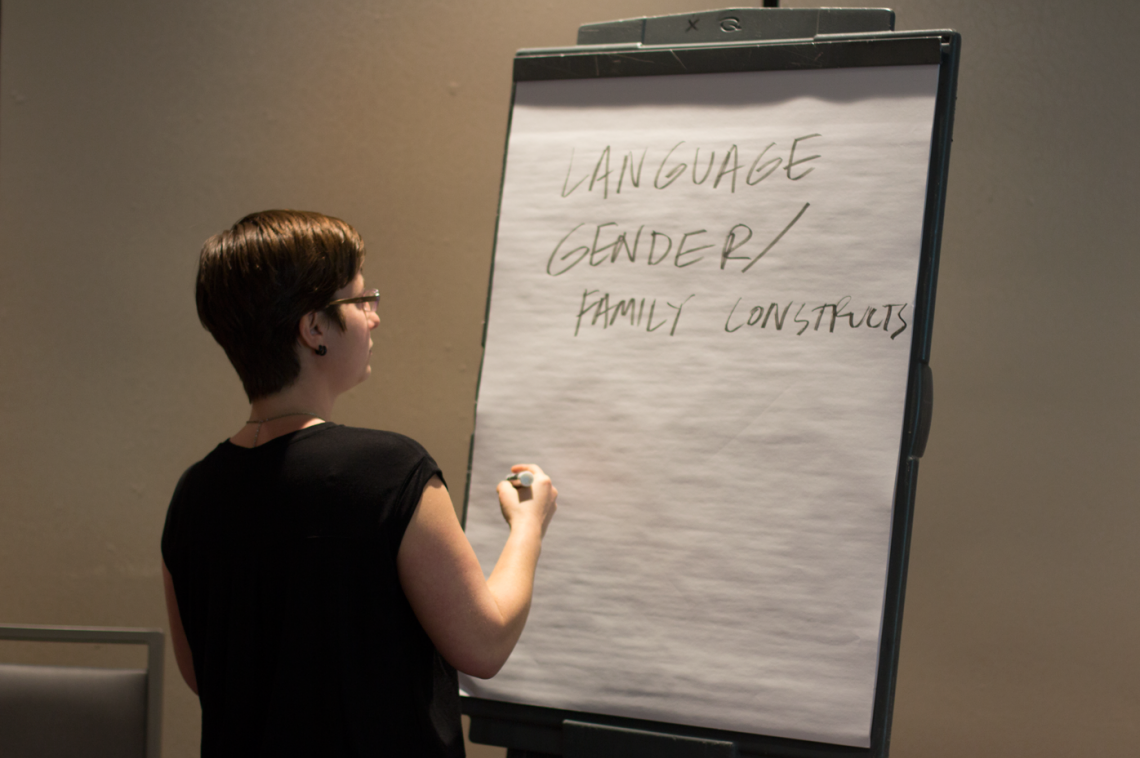
How do we move the field and our knowledge from a beginning, more remedial understanding (101) to a more advanced, thoughtful understanding (201)? What resources, frameworks and initiatives should we be working on to ensure the growth and sustainability of creative placemaking projects?
At our recent ArtPlace Summit in Phoenix, AZ, we asked our attendees to break down these complex questions. Today we’re going to look back at the two sessions, which dealt with the question “What is the desired community change?”
In the first breakout session, titled “Facilitating Community Dialogue: Techniques for Bridging Boundaries and Creating a Vision”, our attendees began by talking about the barriers they face when engaging their communities in a fruitful, continuous dialogue.
Chelsea Alger, the resource development officer for the Southwest Minnesota Housing Partnership, got things started with a short overview of her organization’s work in a community with widely disparate cultural groups and, thus, significant language barriers.
“We have a lot of community growth centers that have experienced a lot of change and diversity over the last 20 years,” Chelsea told us. “Worthington has a large Hispanic and East African population. There’s now over 50% minority population in their schools. Milan, for example, has a large, almost 50%, Micronesian population, and then Walnut Grove has a large Hmong population.”
In addition to language and culture barriers, there are also geographic concerns. “Everything is two hours from something, so the ability to really get around is an interesting accessibility concern,” Chelsea explained. “People are living completely parallel lives and they’re not intersecting.”
Attendees kept returning to the challenge of figuring out the appropriate language with which to engage people. Our attendees weren’t just talking about literal language–they also discussed when it’s better to connect with certain groups through other tools such as dance, food, social media, or visual arts.
Ramona Alexander, the arts and culture manager for the Dudley Street Neighborhood Initiative in Roxbury, MA, emphasized the importance of language in her work, saying, “Understanding language is key, knowing what the language of the oppressor is especially important.”
Understanding where different community stakeholders stand–“oppressors” included–and preparing ourselves to engage in dialogue with them is necessary for building cross-sector support. In the second breakout session pertaining to this topic, “Building Cross-Sector Teams: Tactics for Partnering with Key Stakeholders”, our attendees more closely examined how cross-sector partnerships lead to better solutions for everyone.
“Your partners come to the table because of the power of self-interest,” Primus Wheeler, the executive director of the Jackson Medical Mall Foundation, explained. “Everybody comes for some reason. If you can coalesce those interests into one outcome, you have a successful project.”
Primus pointed out that to serve the needs of the community as a whole, sometimes we have to work with stakeholders who may be threats or oppressors. “They’re a necessary evil and you’ve got to incorporate them,” Primus said. “You’ve got to keep trying to put people together and accomplish the greater good. It’s tough.”
Unfortunately, this can put strain on the delicate balance of trust between community members, leaders and stakeholders. Our attendees pointed out, however, that we can use the arts to bridge these gaps in mutual understanding and unify the diversity in a given place. To really make this cross-sector work effective, though, the breakout attendees said that the need for strong leaders is paramount.
“Everyone, at some point, needs to come to an agreement about what the challenge is, so that we’re all focused on answering the same question,” one participant noted. That leader (or team of leaders) works to ensure all the self interests that Primus mentioned earlier are capable of gelling.
What does the process for doing that look like? “Moving out of silos, trying to look for ways to create common space where the bigger vision can prevail, and then allowing each individual department, or each sector, to find its way in contributing to that bigger vision,” is what Deborah Cullinan, the CEO of Yerba Buena Center for the Arts in San Francisco, CA, suggested.
Whether you’re dealing with a place like San Francisco, where resources and capital may be abundant (as Lynne McCormack, director of creative placemaking for national programs at the Local Initiative Support Corporation, astutely noted) or Jackson, Mississippi, where resources are lower and trust issues abound, our attendees reminded one another that people are always our most valuable resource.
If we want to find out what sort of change a community desires, working across sectors and across cultural barriers is of primary importance to truly understanding what meaningful, sustainable change looks like.





